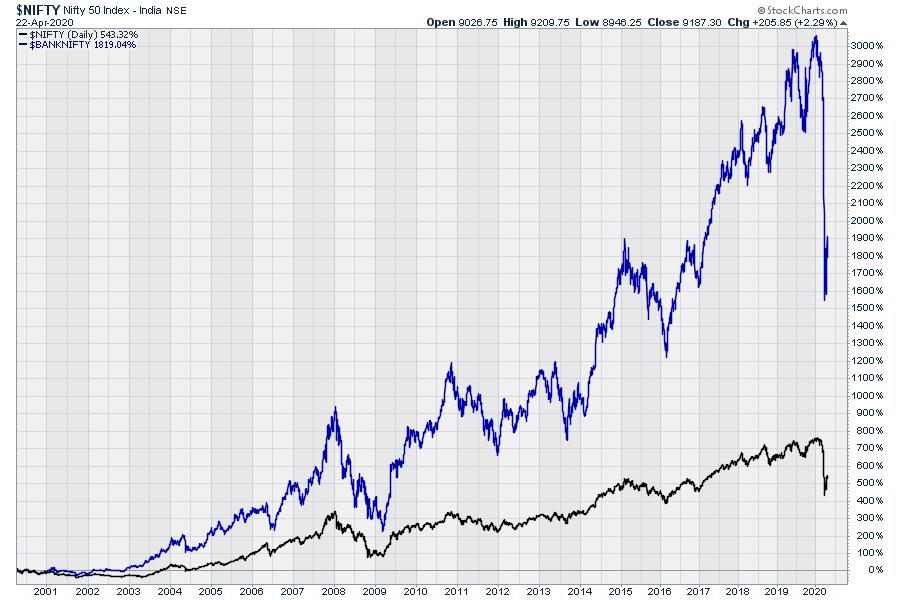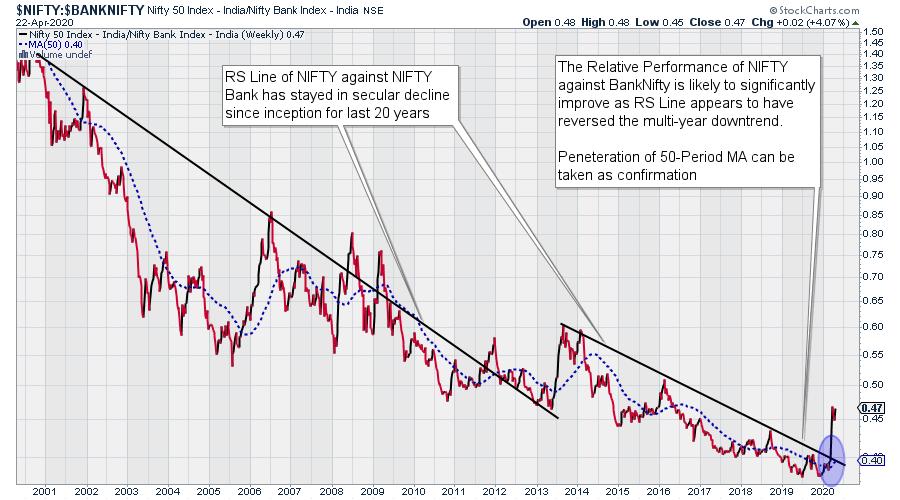The front line index NIFTY50 ($NIFTY) and the Nifty Bank Index ($BANKNIFTY) have always shared a steady one-sided relationship since the inception the two indices.

The above chart shows the NIFTY and BankNifty's co-performance since inception. Right from the introduction of these two indices in the year 2000, the BankNifty, represented with the blue line, has thoroughly outperformed the NIFTY. In percentage terms, the BankNifty has returned 1740.08%, while the NIFTY has returned 464.09% since inception. However, this relationship is set to change for the near term.

The Relative Strength Line (RS Line) of NIFTY against BankNifty has stayed in secular decline over the past two decades. However, it now appears to have reversed its multi-year downtrend and is seen sharply inching higher. The penetration by the RS Line of its 50-Week MA can be seen as a confirmation of this technical development.
It will not be a surprise if we now see NIFTY relatively outperforming the BankNifty in the near term.
Milan Vaishnav, CMT, MSTA
Consulting Technical Analyst,
Scroll below and input your email ID to be notified when a new technical note is posted on this blog.
